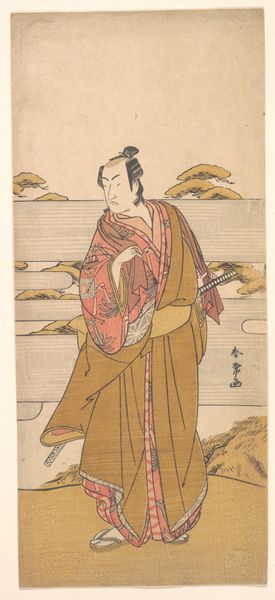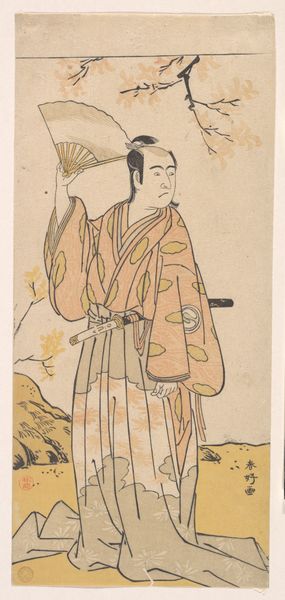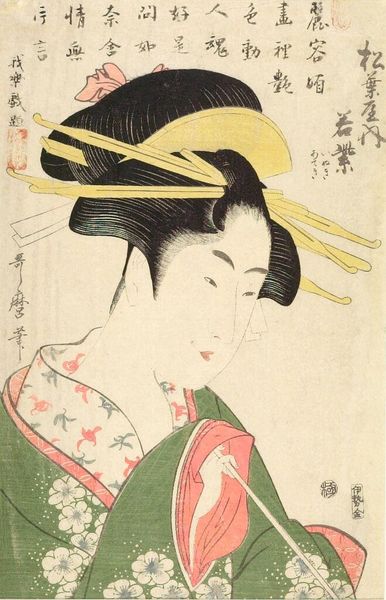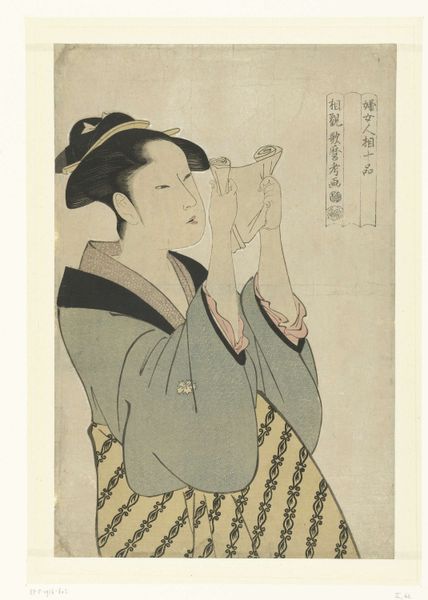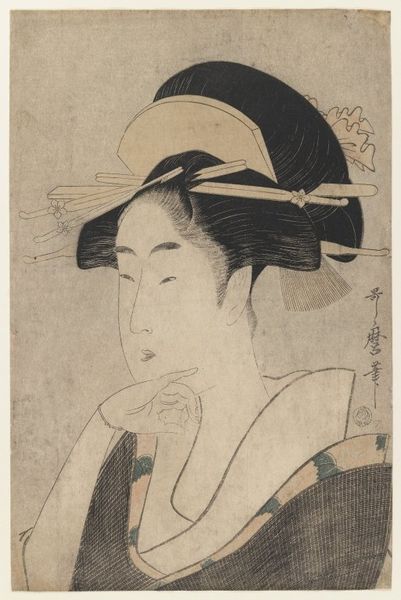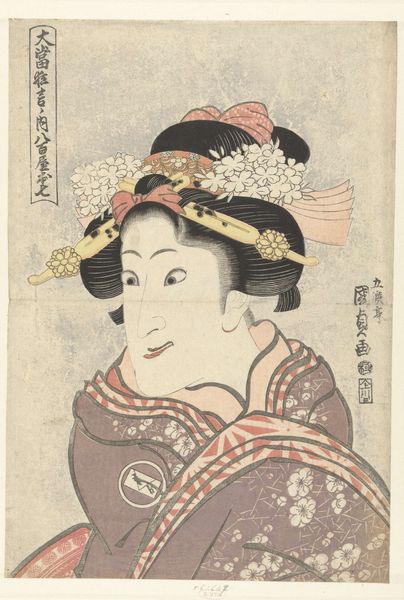
print, woodblock-print
#
ink painting
# print
#
asian-art
#
landscape
#
ukiyo-e
#
figuration
#
woodblock-print
#
genre-painting
Dimensions: H. 27 3/4 in. (70.5 cm); W. 4 5/8 in. (11.7 cm)
Copyright: Public Domain
Editor: Here we have "Young Man Strolling near the Sea," a woodblock print by Isoda Koryūsai, dating back to around 1770-1790. The vertical format and delicate lines create a sense of quiet observation. What’s your perspective on this piece? Curator: As a materialist, I'm particularly drawn to the process behind this print. Think about the labor involved: the carving of the woodblocks, the application of the inks, the careful registration of colors layer by layer. Each stage is a testament to skill. How does considering the physical making influence your interpretation? Editor: I hadn’t thought of it that way. Knowing it's a woodblock print makes me appreciate the detail even more – that level of precision carved into wood! It changes my focus from just the subject to the skill and effort of the artist and the printer. Curator: Precisely! And beyond the individual labor, consider the broader social context. Woodblock prints like these were mass-produced for a burgeoning merchant class. They represent a shift in artistic consumption, away from the elite and towards a wider audience. Do you think that affects its status as 'high art'? Editor: That’s interesting. It almost democratizes art. I guess traditionally we would see it differently if it was, say, a painting commissioned by royalty. Here, the purpose and accessibility challenge that hierarchy. So the means of production changed the function, too. Curator: Exactly. This ukiyo-e print, born from craft and intended for consumption, collapses those established categories. How does analyzing it through this lens change your perception of it? Editor: It really does transform how I see it. I see both an aesthetic artwork and also evidence of shifting class structures, consumption habits and, ultimately, the democratization of art through accessible techniques. It's quite a revelation.
Comments
No comments
Be the first to comment and join the conversation on the ultimate creative platform.
